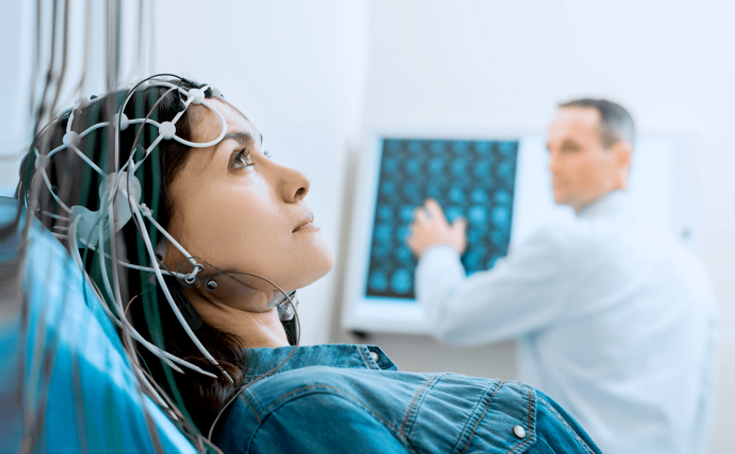
Electroencephalogram (EEG)
An Electroencephalogram (EEG) is a diagnostic test that measures electrical activity in the brain using small, metal discs called electrodes placed on the scalp. It records the brain's electrical signals or wave patterns, providing insights into its functional status. This test is often used to detect abnormalities in brain activity, such as those seen in epilepsy, seizures, and other neurological conditions.
Symptoms Leading to EEG
EEG is typically recommended when a patient experiences:
- Seizures: Episodes of involuntary movements, convulsions, or altered awareness.
- Unexplained Loss of Consciousness: Fainting or blackouts without a clear cause.
- Sleep Disorders: Such as insomnia, sleep apnea, or narcolepsy.
- Head Injuries: To evaluate the extent of brain damage.
- Dementia Symptoms: Memory loss, confusion, or difficulty thinking.
- Brain Tumors: Symptoms like severe headaches or vision changes.
- Behavioral Changes: Such as uncharacteristic aggression, confusion, or hallucinations.
Causes Requiring an EEG
- Epilepsy: Abnormal electrical activity leading to seizures.
- Brain Infections: Such as encephalitis or meningitis.
- Stroke: Assessing brain function post-stroke.
- Trauma: Evaluating damage after head injuries.
- Neurological Disorders: Including Alzheimer’s disease or Parkinson’s.
- Sleep Disorders: Investigating unusual sleep behaviors or disorders.
EEGs are non-invasive, safe, and painless. The results, typically analyzed by a neurologist, show patterns of brain waves that indicate normal or abnormal activity. For example, spikes in activity might signify epilepsy, while slowing of wave patterns could suggest encephalopathy. By identifying specific abnormalities, EEG aids in timely diagnosis and treatment of neurological and systemic disorders affecting brain function.

